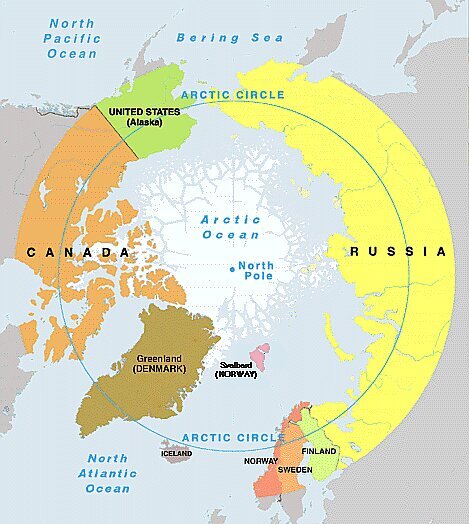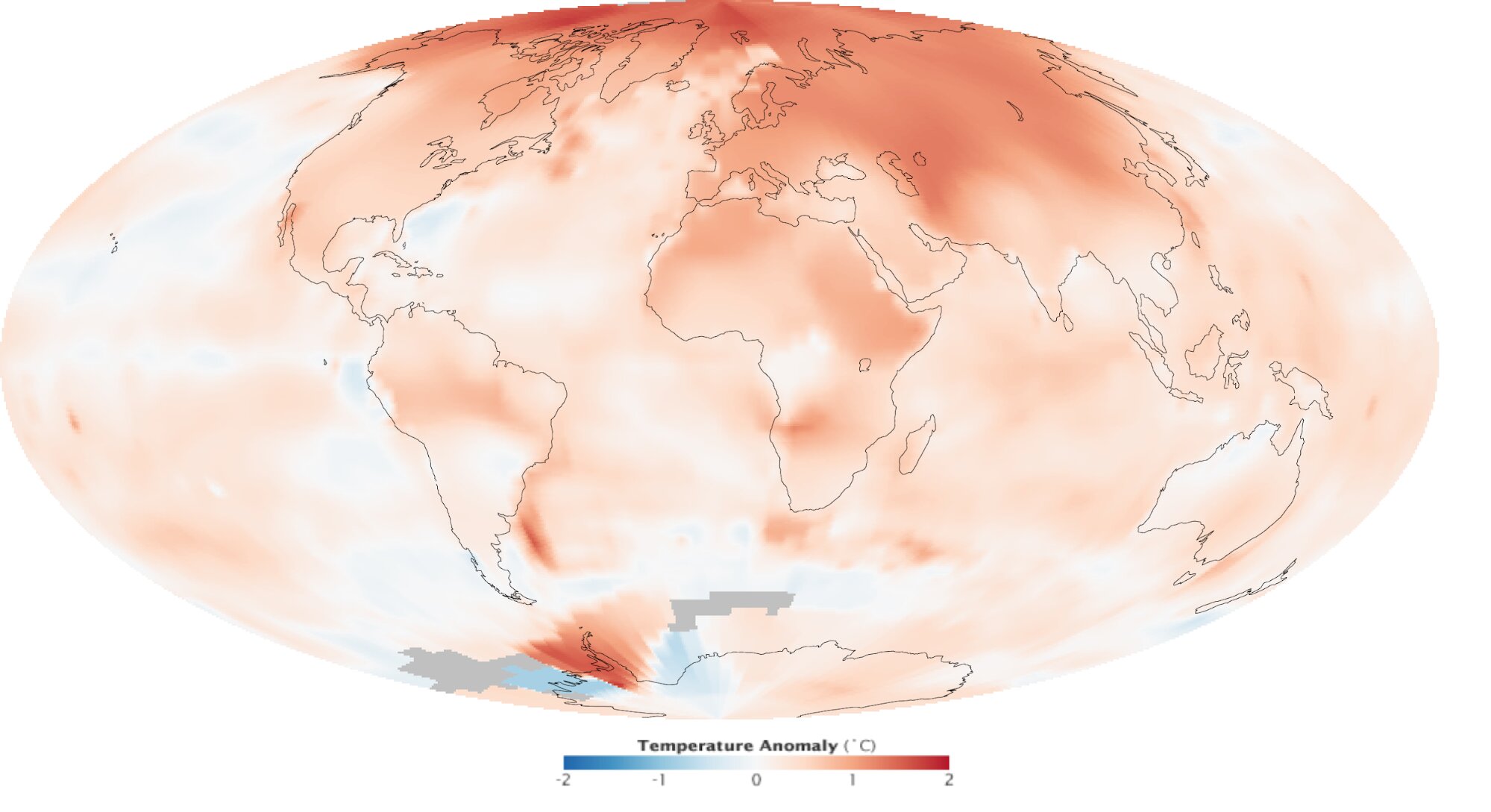Biodiversity & Environment
Arctic Amplification
- 09 Oct 2020
- 6 min read
Why in News
A team of scientists have identified iodic acid (HIO3) as a novel driver of new aerosol particle formation in the Arctic which is responsible for Arctic Amplification or Arctic Warming. Presence of Iodic acid in the region had not been observed previously.
- These aerosol particles influence the formation of clouds. As these clouds reflect solar radiation (known as Aerosol Radiative Forcing) but also retain heat on the Earth's surface, they have an influence on the warming of the Arctic.
Key Points
- About:
- Over the past 30 years, the Arctic has warmed at roughly twice the rate as the entire globe, a phenomenon known as Arctic amplification.
- This means that global warming and climate change are impacting the Arctic more than the rest of the world.
- Global temperatures from 2000–2009 were on average about 0.6°C higher than they were from 1951–1980. The Arctic, however, was about 2°C warmer.
- Scientists first started to see evidence of changes in Arctic climate in the 1980s. Since then, the changes have become much more pronounced.
- Reasons:
- Change in Albedo:
- Albedo is a measure of how much light that hits a surface is reflected without being absorbed.
- When bright and reflective ice (with more albedo) melts, it gives way to a darker ocean (lowering albedo); this amplifies the warming trend because the ocean surface absorbs more heat from the Sun than the surface of snow and ice.
- Changing Ocean currents:
- Ocean currents normally bring in warmer water from the Pacific, and colder water exits out of the Arctic into the Atlantic.
- But those currents may be changing because more melting ice is injecting the Arctic Ocean with freshwater. The missing ice also exposes the surface waters to more wind. This mixes up colder freshwater at the surface and warmer saltwater below, raising surface temperatures and further melting ice.
- Changing Weather
- Ocean currents drive the powerful polar jet stream, which moves hot and cold air masses around the Northern Hemisphere. This is a product of the temperature differences between the Arctic and the tropics.
- But as the Arctic warms, the jet stream now undulates wildly north and south. This has been injecting the Arctic with warm air.
- Thunderstorms are also much more likely to occur in the tropics than the higher latitudes. The storms transport heat from the surface to higher levels of the atmosphere, where global wind patterns sweep it toward higher latitudes.
- The abundance of thunderstorms in tropics creates a near-constant flow of heat away from the tropics towards the Arctic
- Change in Albedo:
- Impact in the Arctic:
- The floating sea ice cover of the Arctic Ocean is shrinking, especially during summer.
- Snow cover over land in the Arctic has decreased, notably in spring.
- In addition, frozen ground in the Arctic, known as permafrost, is warming and in many areas thawing.
- Comparison with Antarctica:
- There is no Antarctic amplification. Antarctic warming has been similar to the global average, although some parts are warming much faster.
- Reason: Antarctica is surrounded by the vast Southern Ocean, which is soaking up much of the atmosphere’s excess heat.
- Effects Worldwide:
- Higher temperature will cause a Sea-Level Rise globally that in turn has impacts like the destruction of ecosystems, displacement, loss of life and property etc.
- Arctic permafrost thaw is also releasing the potent greenhouse gas methane causing profound global warming effects.
- Arctic wildfire, called Zombie Fire intensity is also increasing each year as thawing ground dries out.
- Other Related Information:

- The Arctic Council is the leading intergovernmental forum promoting cooperation, coordination and interaction among the Arctic States, Arctic indigenous communities and other Arctic inhabitants on common Arctic issues, in particular on issues of sustainable development and environmental protection in the Arctic.
- Recently, the Indian Prime Minister at Eastern Economic Forum (EEF), mentioned India’s willingness to play a significant role in the Arctic Council.
Way Forward
The only way to deal with Arctic amplification is by halting global warming as a whole. The Paris Agreement provides a clear vision of limiting global warming. Cutting fossil fuel emissions, conservation of forests and afforestation and carbon sequestration are some of the ways to bring down the global temperature levels.





